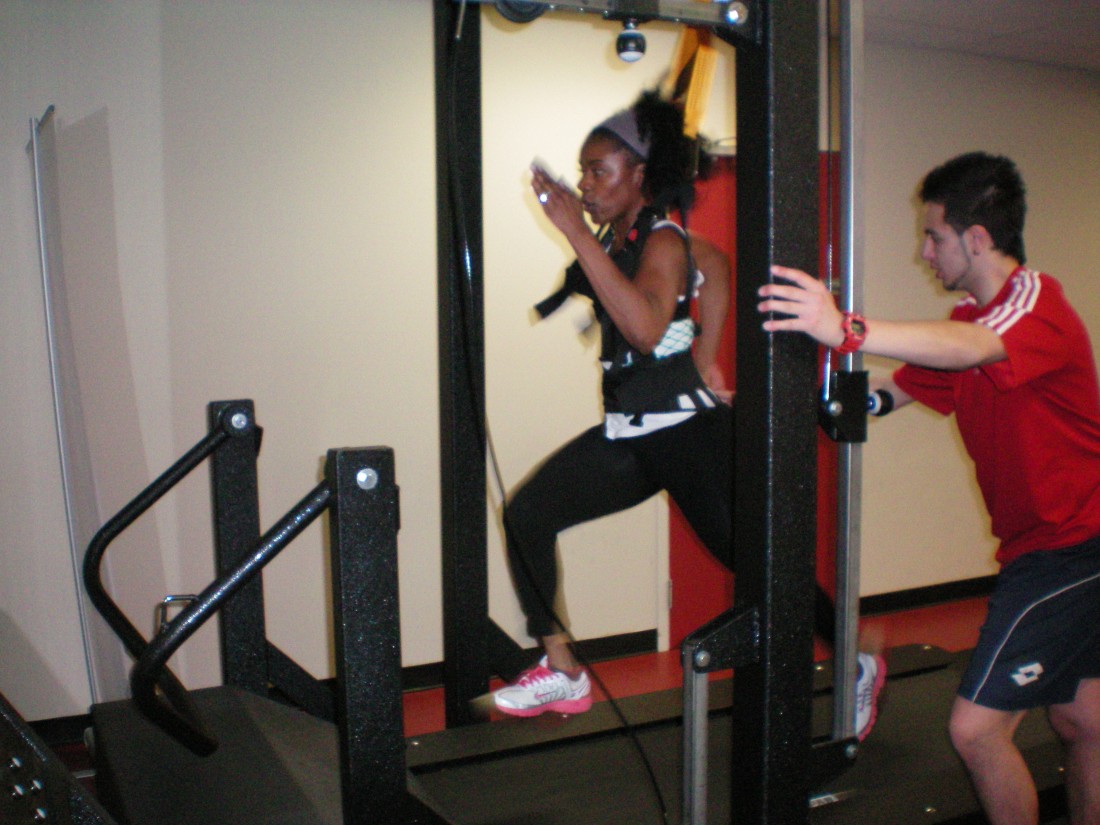I have been working as a fitness coach with elite level soccer players for 15 years. In that time, the one physical ability that seems to always have been of the highest importance to players, parents, and coaches alike, is running speed. Unfortunately, running speed – and how to train/improve it correctly – is probably also the most misunderstood physical ability in soccer. This 3-part article will provide a detailed summary of running speed and how to train to improve it. In Part 1 last week, I provided a definition of running speed, list the phases of a sprint in sports, and discuss what the scientific literature has to say about different methods of speed training. This week, in Part 2, I will discuss the physiology of speed training, including best practices to maximize training effect while minimizing training volume. Finally in Part 3, I will shift focus to the biomechanics and specific coordination aspects of running speed.
Running fast and sprinting is, by definition, an anaerobic activity. This means that the intensity of the exercise (running/sprinting) is so high that the body cannot deliver energy to the muscles through the use and metabolism of oxygen (the aerobic system) and as a result, the anaerobic energy system must produce the energy needed to perform the runs/sprints. The primary anaerobic energy system used in sprinting in soccer is the anaerobic a-lactic system, because this system provides energy for high intensity work lasting from 0-10 seconds (basically the average duration of a sprint in soccer). The system is termed “a-lactic” because there is enough rest between sprints/high intensity runs to avoid the production of lactic acid, which is a painful by-product of high intensity exercise and not something that soccer players want to deal with.
The actual sources of energy in the anaerobic a-lactic system are 2 different high-energy compounds, adenosine tri-phosphate (ATP) and creatine phosphate (CP) located within the exercising muscles. Without getting into all of the details, it is important to know that as soccer players begin training or playing, they will start to perform high intensity runs and sprints, and when this happens, they will start to deplete the stores of ATP and CP in their muscles. When muscular ATP and CP stores get too low, muscular strength and power decrease significantly, and the only way to recover this strength and power is to rest, in order to allow the body to replenish its ATP and CP stores. Interestingly, the recovery of muscular ATP and CP is dependent not on the anaerobic system, but rather on the aerobic system. This means that soccer players who have a high aerobic capacity (better endurance) will be able to replenish their stores of muscular ATP and CP faster, and thus they will be able to recover better between fast runs and sprints, and eventually to perform more runs and sprints throughout a training session or match.
While the information presented above may seem complicated, having a good understanding of the physiology of sprinting in soccer is essential for proper speed training to be planned and executed. The most common mistake made by coaches and fitness coaches conducting “speed” training sessions with their players is that they do not allow the players enough rest between repetitions to facilitate the replenishment of muscular ATP and CP stores. When this type of “speed” training (with insufficient rest periods) is used, the athletes end up running at significantly lower speeds than their maximal capacity because, as mentioned previously, when muscular ATP and CP stores get too low, muscular strength and power decrease. Thus, the end effect of not giving players enough rest between sprints in training is that they actually end up training to be slower, not faster.
So how much rest between sprints is enough? The easiest way to explain planning rest periods between high intensity running and sprinting is to us a “work-to-rest ratio’” which describes the ratio of time spent “working” (running) to time spent “resting.” In general, optimal recovery of muscular ATP and CP can occur with a minimum work-to-rest-ratio of 1:6. This means that if a sprint lasts 2 seconds, then 2 x 6 = 12 seconds of recovery is necessary before the next sprint; if a sprint lasts 5 seconds, then 5 x 6 = 30 seconds of recovery is needed, etc. Bangsbo et. al. (2006) provided a good review of the best way to structure speed training session, including optimal work-to-rest-ratios, as part of a weekly periodization plan for a professional soccer team.
Ultimately, improving running speed in soccer can only occur if players train by running/sprinting at or very close to their maximal capacity. Training at or near maximal capacity, in turn, can only occur if players are given enough recovery between repetitions of runs/sprints to allow for replenishment of muscular ATP and CP stores. Coaches and fitness coaches who wish to improve their players’ running speed must have a good understanding of the physiology of speed in soccer, and plan the work-to-rest ratios in their training accordingly.
I’d love to hear your thoughts about this topic. Drop me a line here to get the conversation started.


Leave A Comment